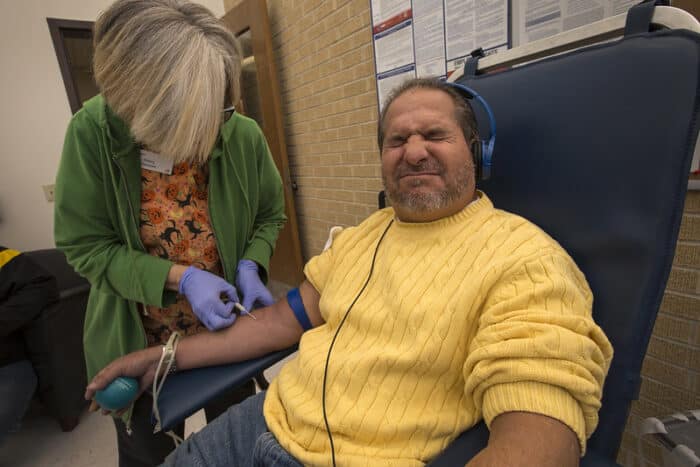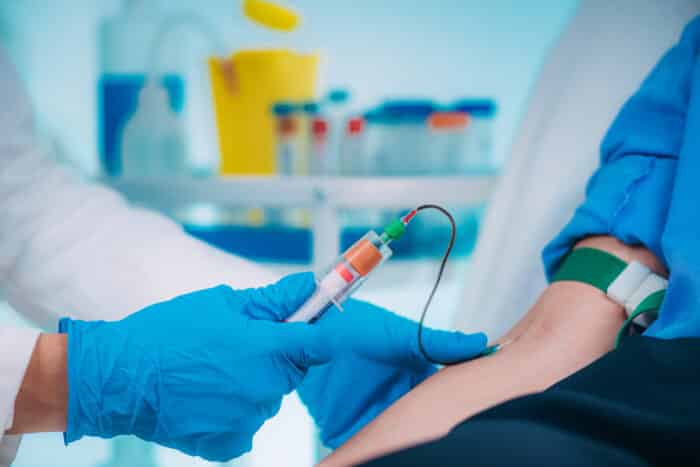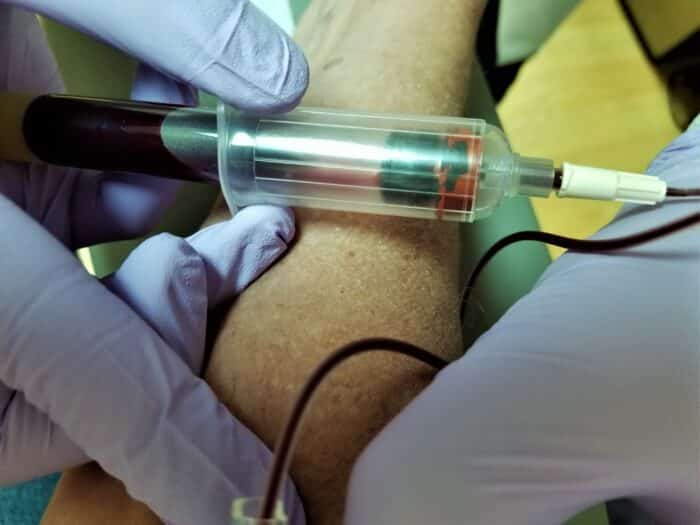If you’re interested in pursuing your career as a phlebotomist, you might have been curious about the different types of phlebotomists out there, and which specialization you might be best suited for.
If you want to be a part of the phlebotomy industry but don’t want to be involved with complicated surgeries or strong medicines, becoming a therapeutic phlebotomist might be the best career choice for you.
Let’s break it down: therapeutic phlebotomy is a treatment where doctors take out a small amount of your blood. It might not sound like much, but this simple procedure can be a game-changer for people dealing with certain health problems.
In this article, we’re going to explore therapeutic phlebotomy together. We’ll learn about what it is, what is the CPT code for it, where one can get it, and much more.
Whether you’re a healthcare expert looking to learn more or just someone curious about this particular kind of treatment, we’ll uncover the secrets of therapeutic phlebotomy and how it’s changing lives for the better.
So, let’s get started!
What is Therapeutic Phlebotomy?
Let’s dive a bit deeper into the world of therapeutic phlebotomy. Therapeutic phlebotomy is a medical technique where a specific amount of blood is withdrawn from a patient’s body for either treating or managing certain health conditions.
When people donate blood voluntarily, they do so with the intent of helping others in need. In therapeutic phlebotomy, however, the focus is on the individual undergoing the procedure. It’s a medical intervention that addresses their specific health concerns.
Read: What is a Phlebotomist
What is the CPT Code for Therapeutic Phlebotomy?
If you’re working in the medical field, you might have questions about the CPT (Current Procedural Terminology) code that goes along with therapeutic phlebotomy.
Generally, the code you’ll use for this procedure is CPT 39107. However, it’s important to note that coding can sometimes be nuanced and situation-specific.
Therefore, it’s crucial to seek guidance from a healthcare professional for the most precise coding information, as it may vary depending on the specific circumstances and context of the procedure.
Also see: How to Become a Phlebotomist
Where To Get Therapeutic Phlebotomy
If you find yourself or someone you know in need of therapeutic phlebotomy, you might be wondering where to seek this essential medical procedure.
Fortunately, there are several accessible options. Therapeutic phlebotomy is typically offered at a range of healthcare establishments, including hospitals, clinics, and specialized treatment centers.
To get started on the path to therapeutic phlebotomy, the first step is to reach out to your primary care physician. Your primary care physician possesses the expertise to evaluate your health condition and guide you to the medical facility best equipped to provide the necessary care.
The Therapeutic Phlebotomy Procedure
Now, let’s dive into what occurs during a therapeutic phlebotomy procedure. First and foremost, you will undergo an assessment by a healthcare professional to determine whether this treatment is appropriate for your specific medical condition.
If you qualify, the procedure follows the following steps:
1. Preparation: You will be comfortably seated or positioned in a reclined posture.
2. Sterilization: The area where the needle will be inserted is meticulously cleaned and sterilized to minimize the risk of infection.
3. Needle Insertion: A slender needle is gently introduced into a vein, typically located in your arm.
4. Blood Removal: The needle allows for a gradual and controlled removal of blood from your body.
5. Monitoring: Throughout the procedure, your vital signs, such as pulse and blood pressure, will be closely monitored to ensure your safety and well-being.
6. Completion: Once the prescribed amount of blood has been collected, the needle is carefully removed, and the insertion site is covered to prevent any bleeding or infection.

Do You Want To Become a Phlebotomist? Check Out Free Phlebotomist Masterclass!
In our masterclass you learn:
- How to be a Phlebotomist faster…in just 2 months!
- Avoid student debt & driving to classes
- #1 thing employers want from Phlebotomists
- How to stand-apart & get a university certificate for a strong resume
What are the Conditions Required for Therapeutic Phlebotomy?
Therapeutic phlebotomy is a treatment used when your body has too much of certain things in your blood, like too many red blood cells or too much iron.
Here are some examples of conditions it can help with:
1. Hemochromatosis: This is a condition where your body collects too much iron, usually because of genetics.
2. Polycythemia Vera: This is a rare blood problem where you have too many red blood cells.
3. Porphyria: These are uncommon genetic conditions that can affect your skin or nerves.
How Much Blood is Removed in a Therapeutic Phlebotomy Procedure
The amount of blood drawn during therapeutic phlebotomy isn’t set in stone; it changes depending on your medical condition and your unique needs.
Generally, during each session, they take out somewhere between 300 to 500 milliliters, which is roughly equal to 10 to 17 ounces of blood.
However, your healthcare provider will customize the procedure to fit your specific situation, always prioritizing your safety and comfort.
Related FAQs
How many questions can you miss on the NHA phlebotomy exam?
The passing score and the allowable number of incorrect answers on the National Healthcareer Association (NHA) phlebotomy exam can vary depending on the exam’s difficulty and current standards.
To get the most accurate and up-to-date information about passing scores and the number of questions you can answer incorrectly on the NHA phlebotomy exam, it’s best to contact the NHA directly or refer to their official exam materials and guidelines. They will provide you with the most current and relevant details specific to your exam.
Additional Resources:
Related Articles
-
How to Be Successful in College in 2022 – 7 Simple Tips to Succeed
-
How Do Scholarships Work? Read This First…Truth is Shocking
-
7 Best College Majors 2024: What Should I Major In?
-
How to Choose a College – 10 Things You Must Consider in 2024
-
Why Go to College? Top 13 Benefits for Adult Students in 2022
-
Top 5 Best Alternatives to Community College for 2024









